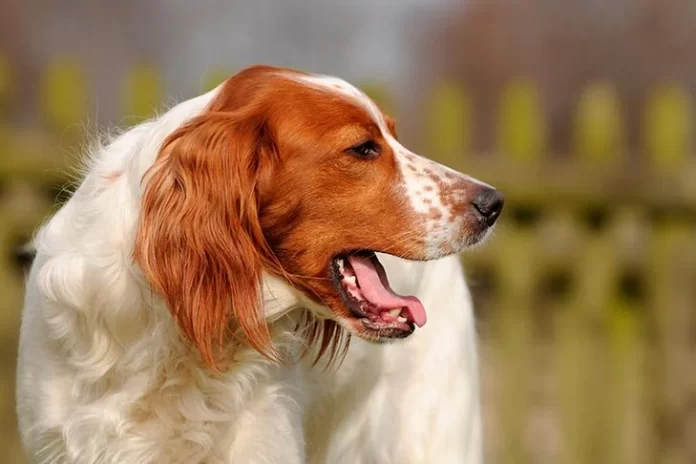Last Updated on August 17, 2023 by Fumipets
Collapsed Trachea in Dogs: Symptoms, Causes & Care
Discover the ins and outs of a concerning canine condition – collapsed trachea. This comprehensive guide delves into the symptoms, causes, and proper care for dogs facing this respiratory issue.
From understanding the telltale signs to exploring the factors that contribute to its development, you’ll gain valuable insights into providing the best possible care for your furry friend.
Whether you’re a seasoned dog owner or a newcomer to the world of pet care, this guide equips you with the knowledge to navigate the challenges of collapsed trachea with confidence.
Collapsed Trachea in Dogs
Collapsed trachea in dogs is a condition that may sound serious – like they need to be rushed to the veterinary clinic and may not survive to the following day. However, many dogs really have happy lives for years despite having collapsed trachea (windpipe). The ailment is not life-threatening until it reaches its most advanced level.
A collapsed trachea may be controlled with medicine, lifestyle changes, and sometimes surgery even though there is no known cure. Continue reading to find out what you can do to make your dog feel better.
What Is a Collapsed Trachea?
Similar to a vacuum hose, the trachea is a flexible tube with rings of cartilage spanning the length of it to give it structure and keep it open. Tracheal collapse happens when the tube flattens due to the pressure of your dog breathing in and part of the cartilage begins to deteriorate.
According to Joao Felipe De Brito Galvao, MV, MS, a board-certified specialist in small animal internal medicine at VCA Arboretum View Animal Hospital in Downers Grove, Illinois, this narrows the airway, making it difficult for your dog to breathe properly and causing coughing spells.
What Causes Collapsed Trachea in Dogs?
Although the specific origin of collapsed trachea in dogs is unknown, there does seem to be a genetic component since certain breeds are more susceptible to the problem, such as:
- Chihuahuas
- Lhasa apsos
- Pomeranians
- Shih tzus
- Toy poodles
- Yorkshire terriers
Any dog, regardless of age, might get a collapsed trachea. However, elderly or middle-aged small breeds are more likely to experience it.
Signs and Symptoms of Collapsed Trachea in Dogs
A dry cough that sounds like a honking goose is the most obvious symptom of a collapsed trachea. Additional signs include:
- Wheezing on inhalation
- Coughing when excited, picked up, or pulled by the collar
- Coughing during exercise
- Difficulty breathing
- Fainting

Treatment for Collapsed Trachea in Dogs
Dogs with collapsed tracheas might get a variety of treatments. In most cases, the illness is treated with medication, which, according to the American College of Veterinary Surgeons, is effective in up to 70% of dogs. However, because collapsed trachea is a chronic, degenerative condition, your dog may ultimately need surgery to keep the airway open.
Cough Suppressants
Coughing is a vicious cycle for dogs with collapsed tracheas since the disease causes it and coughing aggravates an already inflamed trachea. You probably guessed it—more coughing follows.
To reduce coughing, veterinarians often prescribe sedatives like hydrocodone and cough suppressants. According to Galvao, the sedative also keeps animals from becoming anxious or aroused, which would cause them to cough again.
Other Medications
Aside from cough suppressants, veterinarians may also recommend medicines like prednisone to treat airway irritation. Galvao notes that treating airway infections, which might exacerbate respiratory diseases, with antibiotics like doxycycline may also be beneficial.
Surgery
When a collapsed trachea makes it exceedingly difficult for dogs to breathe, surgery is required. When a dog’s trachea collapses, there are two different methods that might be used.
For neck-based trachea collapse, the initial option is a standard operation. To support the softening cartilage, plastic rings are placed outside the trachea. The success rate of the procedure is 75%. However, Galvao notes that “this procedure requires an incision and is associated with complications.”
A minimally invasive technique that inserts a stent (a hollow, metal-mesh tube) into the trachea to prop it open is another option. The procedure is carried out without the need for an incision; the veterinary surgeon enters the patient’s mouth to access the tracheal aperture and is directed by ongoing X-ray pictures as to where to put the stent. Canines with neck- or chest-collapsed trachea may benefit from this surgery. 90 percent of the dogs then exhibit improvement.
Galvao warns that symptoms may not totally disappear. “Coughing may persist since the stent itself may irritate the trachea to some extent. However, a collapsed trachea won’t become life-threatening thanks to the stent.
Most dogs continue taking medicine to treat their disease for the rest of their lives after either treatment.

Home Remedies
There are many things you can do at home to make your dog with a collapsed trachea feel better in addition to following your vet’s advice. They’re all focused on lessening your dog’s coughing episodes.
Keeping your dog at a healthy weight is a great place to start. That’s because symptoms of a collapsed trachea are worse when a person is overweight. Additionally, avoid utilizing neck leads since they create strain on the trachea. Instead, go on short, daily walks with a body harness when the weather is agreeable outdoors since hot weather and strenuous activity make dogs pant, which may exacerbate coughing.
Encourage your dog to remain quiet and peaceful at home, and stay away from circumstances that you know would agitate your dog. Since secondhand smoke irritates the lungs, a smoke-free atmosphere may also be quite beneficial.
Your pet may still cough sometimes despite your best attempts to prevent it. Follow the directions on the cough suppressant your veterinarian recommended. worn out? You may try honey in a pinch. It works as a natural cough suppressant for humans and could also calm your dog’s throat. For every 20 pounds of your dog, add one teaspoon of it to the water dish. As much as three times each day are allowed.
Dogs may often take honey as a home treatment without any problems, according to Alena Abens, DVM, the medical director of the VCA Chicago North Animal Hospital. But you should speak with your veterinarian if you don’t think it’s working.
How Long Can a Dog Live With a Collapsed Trachea?
According to Galvao, a dog with a collapsed trachea has no specific life expectancy. It varies greatly depending on the degree of trachea collapse, the pet’s behavior, and how it develops over time. However, by maintaining the airway open and avoiding respiratory collapse, a tracheal stent may considerably extend the pet’s life.
In conclusion, tracheal collapse is a condition that is controllable. After a diagnosis, the majority of dogs may have pretty typical lives, so there are undoubtedly still plenty of adorable moments in store for you and your canine companion.
In Summary
Collapsed trachea is a respiratory condition that can affect dogs of various sizes and breeds. It occurs when the tracheal rings weaken or collapse, causing breathing difficulties and discomfort. Common symptoms include coughing, wheezing, and labored breathing, often triggered by excitement or physical activity.
Factors contributing to collapsed trachea include genetics, obesity, environmental irritants, and certain small dog breeds prone to the condition. Diagnosis typically involves a physical examination, X-rays, and possibly endoscopy to visualize the trachea’s condition.
Care for dogs with collapsed trachea revolves around managing symptoms and reducing stress on the trachea. Strategies include maintaining a healthy weight, using a harness instead of a collar, providing a humid environment, and using medications as prescribed by a veterinarian.
By being vigilant about the symptoms and understanding the care strategies, you can provide your furry companion with a comfortable and fulfilling life, even in the face of collapsed trachea. Remember, early intervention and proper management are key to ensuring your dog’s well-being and quality of life.
Q&A: Collapsed Trachea in Dogs: Symptoms, Causes & Care
What are the common symptoms of a collapsed trachea in dogs?
Common symptoms of a collapsed trachea in dogs include persistent coughing, especially during excitement or physical activity, wheezing sounds, labored breathing, and in severe cases, blue-tinted gums due to lack of oxygen.
What causes a collapsed trachea in dogs?
A collapsed trachea can result from a combination of factors, including genetics, obesity, and environmental irritants like cigarette smoke. Additionally, certain small dog breeds are more prone to this condition due to their anatomical structure.
How is a collapsed trachea diagnosed by a veterinarian?
Diagnosis typically involves a thorough physical examination, where the veterinarian will listen for abnormal breathing sounds and assess your dog’s overall health. X-rays and, in some cases, endoscopy may be used to visualize the trachea and confirm the diagnosis.
Can a collapsed trachea be cured?
While a collapsed trachea cannot be completely cured, proper management can significantly improve your dog’s quality of life. Through weight management, avoiding irritants, using a harness instead of a collar, and medications prescribed by a veterinarian, you can alleviate symptoms and minimize discomfort.
How can I provide the best care for a dog with a collapsed trachea?
Providing the best care involves a multi-faceted approach. Keep your dog at a healthy weight to reduce stress on the trachea, avoid exposing them to smoke or other irritants, use a harness for walks, and follow your veterinarian’s guidance on medication and treatment options. Regular check-ups will help monitor their condition and make necessary adjustments to their care plan.


















